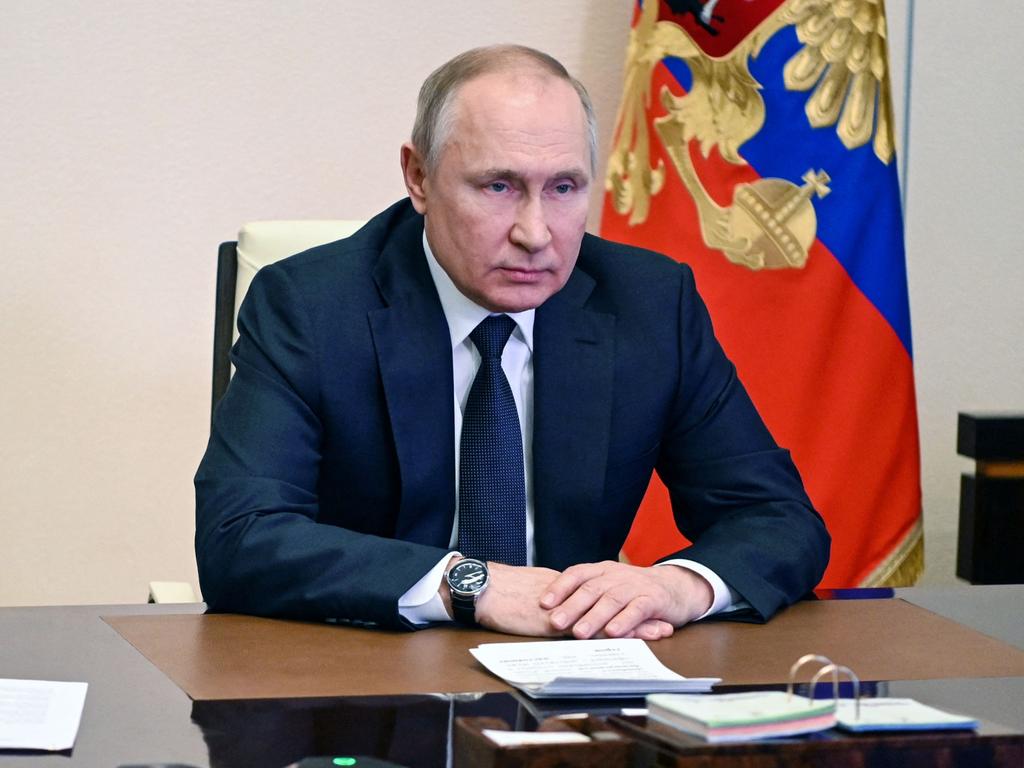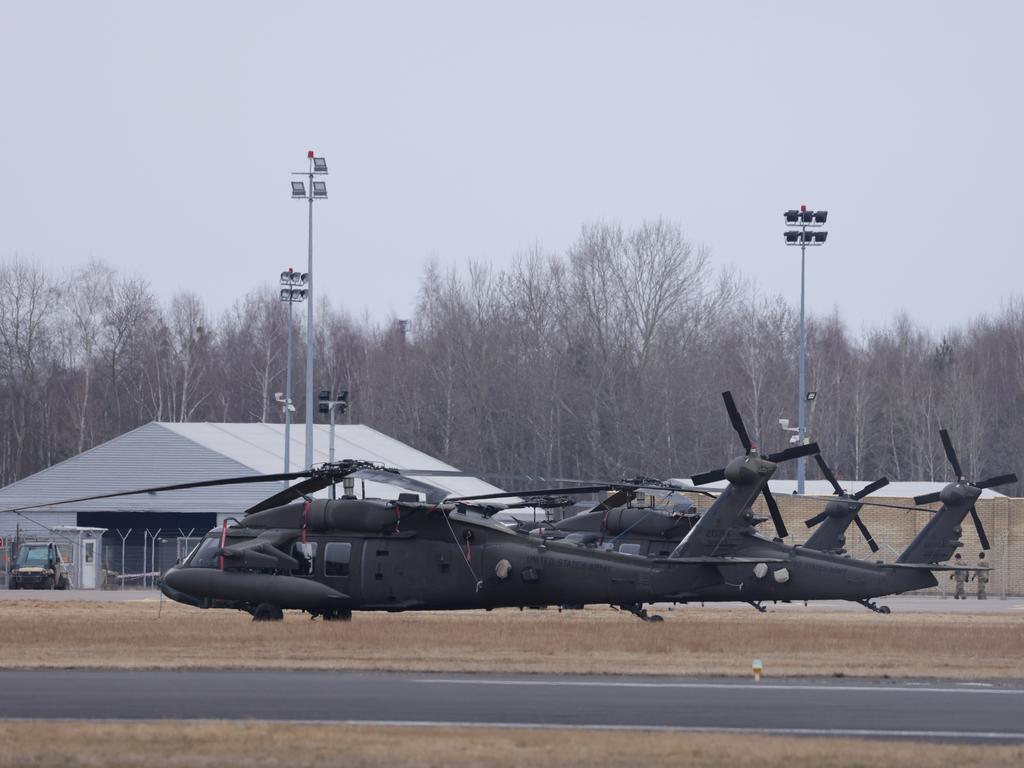Russian artillery kills Ukrainian civilians fleeing Kyiv suburb
Russia’s propaganda machine insists it isn’t targeting civilians and blames Ukrainian ‘nationalists’. But civilian deaths are mounting from Russian strikes on residential areas throughout the country.
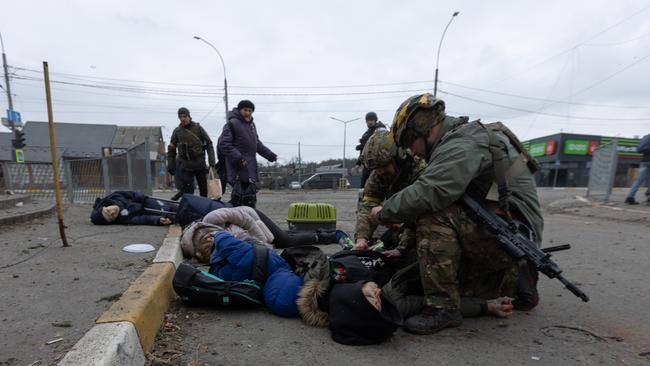
A line of yellow school buses pulled up on a forested roadside in this once-prosperous suburb of Kyiv on Sunday, ready to evacuate Ukrainian civilians. Then the Russian shells started falling.
People dived for cover, hugging the ground. Frightened pets ran into the woods. A man, woman and child were killed. The three bodies fell near one another by a monument to local soldiers who died fighting the Nazis in World War II. Their grey suitcase stood nearby, untouched by the blast.
Eight Irpin civilians were killed by Sunday afternoon (local time), as relentless shelling continued. A house was ablaze after receiving a direct hit. In the distance, plumes of grey smoke rose above Irpin, where Ukrainian forces fought to repel a Russian attack on what is a critical gateway to Kyiv.
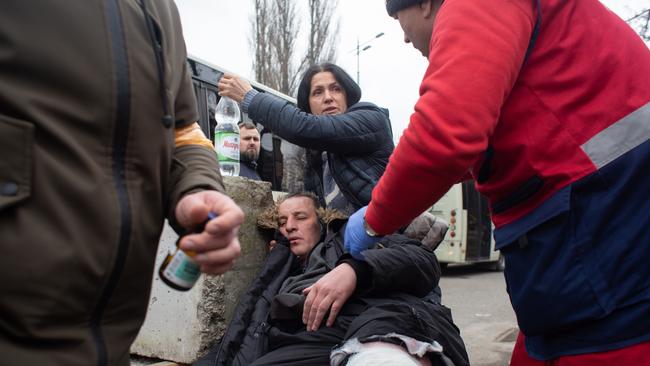
Russia’s military propaganda machine insists it isn’t targeting civilians and blames Ukrainian “nationalists” for shelling their own, without any evidence.
Civilian deaths are mounting from Russian strikes on residential areas in cities throughout the country, while agreements to evacuate other towns and cities have fallen through. Ukrainian authorities said they had to abandon efforts to evacuate civilians from the southern city of Mariupol for the second day in a row, saying Russia shelled the southeastern port city as evacuation convoys were gathering.
More than 200,000 civilians had been expected to start leaving Mariupol and nearby Volnovakha on Saturday in a deal overseen by the International Committee of the Red Cross. The agreement was supposed to be a test case for similar humanitarian corridors out of other Ukrainian cities and towns, including Irpin.
In Irpin, residents have been streaming out for days, as Russian shelling has increasingly hit civilian neighbourhoods, with artillery rounds smashing into high-rise apartment towers. But this was the first time Russia directly attacked an evacuation route – as hundreds of civilians were trying to escape.
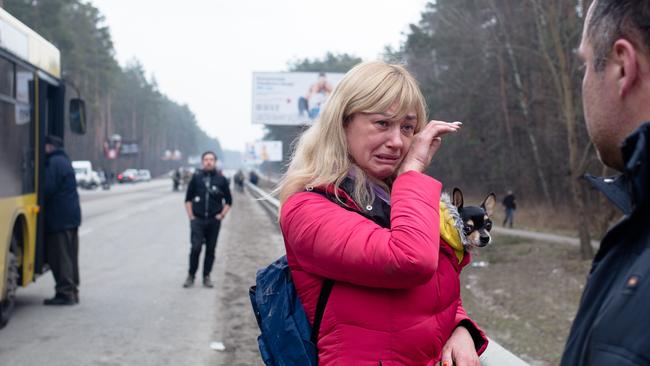
“It’s a miracle I am still alive,” said Lyubov Tarasyk, her face flushed and her coat muddy. “It hit so close to us. I am fortunate someone pushed me down, my face into the dirt. The soldiers who helped me, they said I was born in a shirt,” she added, using a Ukrainian expression for incredible luck.
Russian and Ukrainian negotiators, scheduled to hold their third round of talks on Monday, have agreed in principle to open humanitarian corridors for civilians fleeing areas besieged by Russia or under Russian attack. Irpin isn’t covered by any humanitarian corridor agreement, but Ukrainian officials said they were trying to secure evacuations from the nearby towns of Bucha and Hostomel.
Ukrainian forces battling to retain control of Irpin destroyed a column of Russian armour on Saturday night. On Sunday, they fired long-range artillery barrages on Russian positions. The town remained contested, with a large number of Ukrainian troops, including special forces armed with anti-tank missiles, trying to repel a Russian advance. “We are holding off the enemy, but unfortunately the enemy has come with an enormous force,” said Kyiv region governor Oleksiy Kuleba.
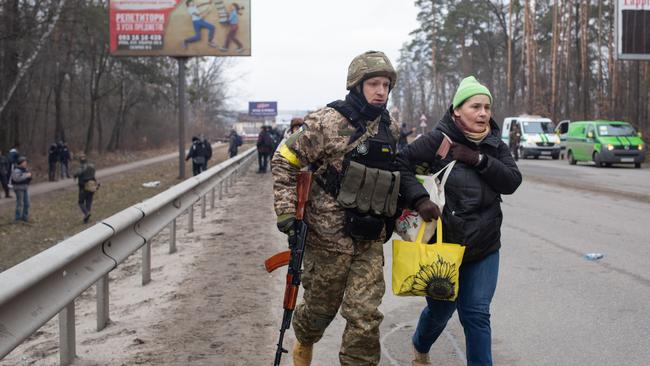
Caught in the middle of this are thousands of civilians, many of them too frail to walk. At the entrance to Kyiv from Irpin, a woman who gave her name as Lesya was shaking as she spoke to a psychologist from Ukraine’s emergency service. Her parents, in their 80s, have remained behind.
“There was an explosion to the left of my house, there was an explosion to the right, and my parents are still there, in between, after a stroke, in their slippers,” she asked. “How can I get them out?”
Just before the shelling of the evacuation route started, Ukrainian soldiers were helping women and children climb over the highway railing and into buses, passing prams and suitcases. Some of the elderly had to be carried.
The buses, organised by charities nearby, were offering free rides to the western Ukrainian cities of Rivne and Lutsk. Once every few minutes, civilian cars brought in people injured in the shelling. They were loaded into waiting ambulances and taken to hospitals.
The Wall Street Journal

